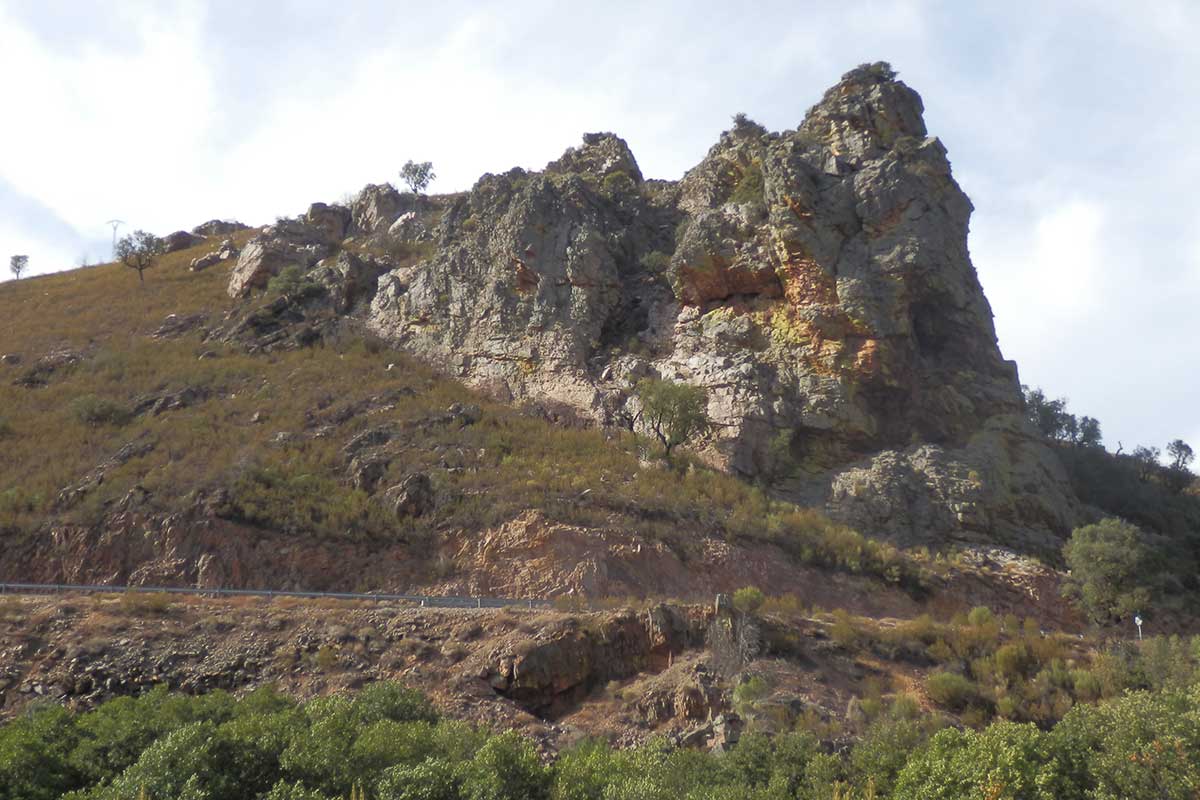LOCATION AND ACCESS
On the Castañar de Ibor to Robledollano road approximately halfway between the two towns. The fault mirror is in a trench that has been dug in the road under the Cancho de las Narices on a bend with poor visibility, which makes it necessary to stop before reaching the bend when coming from Robledollano on a track to the right that descends to the River Viejas. From here the platform created behind the handrail is accessible, from where we can enjoy this geosite in safety. To contemplate the Cancho de las Narices it is best to continue along the road, ford the River Viejas, and go up immediately opposite. The site is a fantastic Portuguese oak grove that affords magnificent views of this phantasmagorical place.

